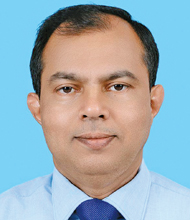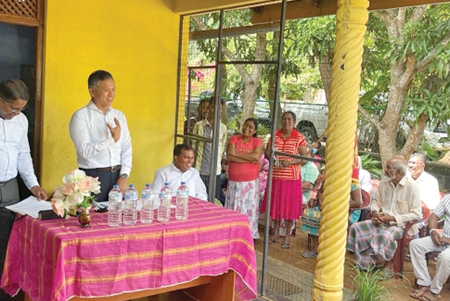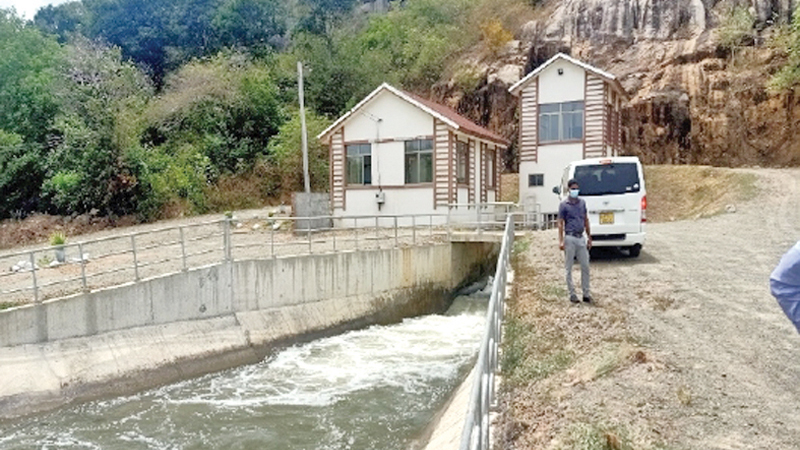Water is not an unlimited resource. Even though 70 percent of the planet is considered as a water globe, only 3 percent is fresh water. Two thirds of the fresh water is unavailable for human use due to it being imprisoned in glaciers or otherwise.
Only one percent of fresh water is available for our use and a large percentage of that is used for agriculture and food processing. As a result, out of the world’s total population of around seven billion, about 1.1 billion have no access to safe drinking water and a population of about 2.7 billion suffer from the acute shortage of water facilities at least for one month of the year. According to the WHO about nearly 3.4 million people die each year due to water borne diseases while the majority are small children.
Unsafe groundwater sources

Project Director Sudhath Rathnayaka
In this backdrop in the Anuradhapura district, 85 percent of the rural population depends on unsafe groundwater sources that contain high fluoride levels and hardness, increasing the risk of dental and skeletal fluorosis. The use of contaminated groundwater is a significant contributing factor to the spread of Chronic Kidney Disease (CKDu), with a notably higher number of CKD patients recorded in rural Anuradhapura compared to the other districts in the country. The Government in turn incurs significant expenditure to provide healthcare facilities for patients suffering from kidney disease.
To address these challenges, the Government is implementing the Anuradhapura North Water Supply Project Phase II with financial assistance from the Japan International Cooperation Agency (JICA) under a JICA Loan of 23,137 million yen. The project covers the Divisional Secretariat Divisions of Padaviya, Horowpothana, Kahatagasdigiliya and Kebithigollewa, as well as parts of Rambewa and Medawachchiya DSDs in the Anuradhapura District. The Government will invest the Sri Lankan equivalent of 4,089 yen for the project.
In addition to providing clean water, the project will ensure socio-economic benefits such as saving on water purification costs. The availability of pipe borne water will further improve sanitation facilities, create economic opportunities, enhance industrial growth and increase land value in the region.
It was earlier targeted to complete the water project by June 2024.
The project is being implemented through six major contract packages. Commencing in May 2018, the detailed design was completed in August 2020. Currently, the project is in the procurement stage.
Disbursement resumed
 The ongoing JICA-funded projects in Sri Lanka, implemented under a bilateral loan agreement between the Government and JICA. Following the temporary suspension of disbursement from April 2022, JICA has now resumed disbursement and granted the approvals to recommence procurement including BMICH expansion project Kalu Ganga water scheme, Kandy metropolitan waste water management project western provincial solid garbage management project etc, Japan has released 12.5 billion yen to go on with once suspended eleven projects.
The ongoing JICA-funded projects in Sri Lanka, implemented under a bilateral loan agreement between the Government and JICA. Following the temporary suspension of disbursement from April 2022, JICA has now resumed disbursement and granted the approvals to recommence procurement including BMICH expansion project Kalu Ganga water scheme, Kandy metropolitan waste water management project western provincial solid garbage management project etc, Japan has released 12.5 billion yen to go on with once suspended eleven projects.
The project encompasses several key areas, including Padaviya, Kebithigollewa, Horowpothana, and Kahatagasdigiliya, along with parts of Rambewa and Medawachchiya. Approximately170,951 residents will benefit with 50,000 new house connections. Phase II extends its scope to distribution networks and storage towers in areas covered under Phase I, including Konakumbuk wewa and Kallanchiya, where 17,000 new connections will be established.
Implementation
The implementation of the project involves six major contract packages. Since its commencement in May 2018, the detailed design phase was completed by August 2020. Currently in the procurement phase, the project is being executed under the guidance of the Government and JICA.
According to the phase II project director, Eng. Sudath Rathnayaka the benefits from the project are, ‘’Access to safe drinking water will significantly reduce the incidence of waterborne diseases, including dental and skeletal fluorosis and CKDu, better water supply will improve hygienic conditions and sanitation facilities in the region, the availability of reliable water sources will attract professionals such as doctors, nurses, and teachers to the area, fostering the development of essential services. The project is expected to spur investments in industries and agriculture, leading to job creation and higher productivity, the reduction in social migration due to limited water access will promote community stability and growth and increase the quality of life for residents across the region’’.
Rathnayaka said the Phase 11 project stands as a transformative initiative addressing critical public health and infrastructure challenges. With continued support from JICA and the Government of Sri Lanka, this endeavour promises a brighter future for thousands of residents in the region Rathnayaka added further.
Apart from the phase II water project being restarted after three years, JICA has already spent Rs. 11,515 million to realise the Anuradhapura North Mega Water project phase one to provide potable drinking water to around 100,000 families in Rambewa and Medawachchiya divisions. 92 000 people in Thambuththegama, Thalwa and Galnewa DS divisions will benefit from another mega water project which is under construction namely the Thambuththegama water supply project at a cost of Rs. 17,000 million.






